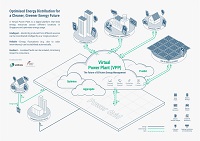Dr Jimmy Chih-Hsien Peng in his letter “Consumers should switch retailers when price plan goes sour” (ST, 22 Feb) suggested that the Open Electricity Market (“OEM”) would lead to “a more expensive electricity bill” due to retailers inflating their profit margins and consumers being inactive in switching.
The OEM has increased competition in the retail electricity market, by allowing more consumers to buy electricity from a retailer of their choice. Similar to other markets for consumer products and services, this increased competition is expected to lead to more attractive offers by electricity retailers. Dr Peng’s suggestion to cap retailers’ profits could stifle market competition and innovation.
Instead, the Energy Market Authority (EMA) has put in place safeguards to protect consumers. Households and small businesses can switch back to buying electricity from SP Group at the regulated tariff or switch to another retailer of their choice. They should check with their existing retailers if applicable charges apply before making this decision. In addition, retailers must safeguard all security deposits collected from households and return them to the consumers at the end of the contract.
Consumers who wish to switch to a retailer can use the Price Comparison Tool (compare.openelectricitymarket.sg) to view and compare the standard price plans offered by different retailers. They can sign up online through the retailer’s website or at roadshows. Consumers are advised to take their time to learn more about their options before deciding whether to switch as it is not compulsory to do so and there is no deadline for switching.
Dorcas Tan (Ms)
Director
Market Development and Surveillance Department
Energy Market Authority
Consumers should switch retailers when price plan goes sour - Jimmy Chih-Hsien Peng (Dr)
22 Feb 2019
The Open Electricity Market (OEM) is currently being rolled out across Singapore to increase market competition in the industry and, thus, lower the electricity price.
While the motivation and mechanism of such a market are sound in theory, the outcome may be different. The OEM may, in fact, drive the wholesale market price - the price to generate power - down while inflating the retail market - the kWh price consumers pay monthly. This is the inconvenient truth seen in mature markets in the United Kingdom, Australia, New Zealand and United States.
For businesses, it is not just legal to maximise profits, but also a requirement that shareholders enforce. The long-term outcome for consumers is obvious - a more expensive electricity bill. Of course, short-term cheap plans will be offered to secure customers before the harvest. For example, the profit margin for electricity retailers in the Australian state of Victoria increased to around 13 per cent in 2017 - more than double what it was when regulators set prices.
To control the inflation of prices, the Energy Market Authority needs to impose a cap on profit margins. This is a tricky business, and the optimal equilibrium can only be found in a trial-and-error manner.
Consumers should also not just blame retailers for price increases, as they are equally responsible. For example, UK retailers found that their customers are generally inactive in switching retailers. This is as consumers are put off by the fine for contract termination and switching costs, despite them knowing that the long-term loss outweighs the short-term expense. This led to price discrimination in the UK. For example, companies offered cheaper prices in new untapped locations while ramping the price in established areas.
Consumers should enjoy the short-term cheap electricity bills, but need to be proactive in switching retailers. They should treat the OEM retailers as stocks and not as bonds, and switch when the price plan goes sour.















